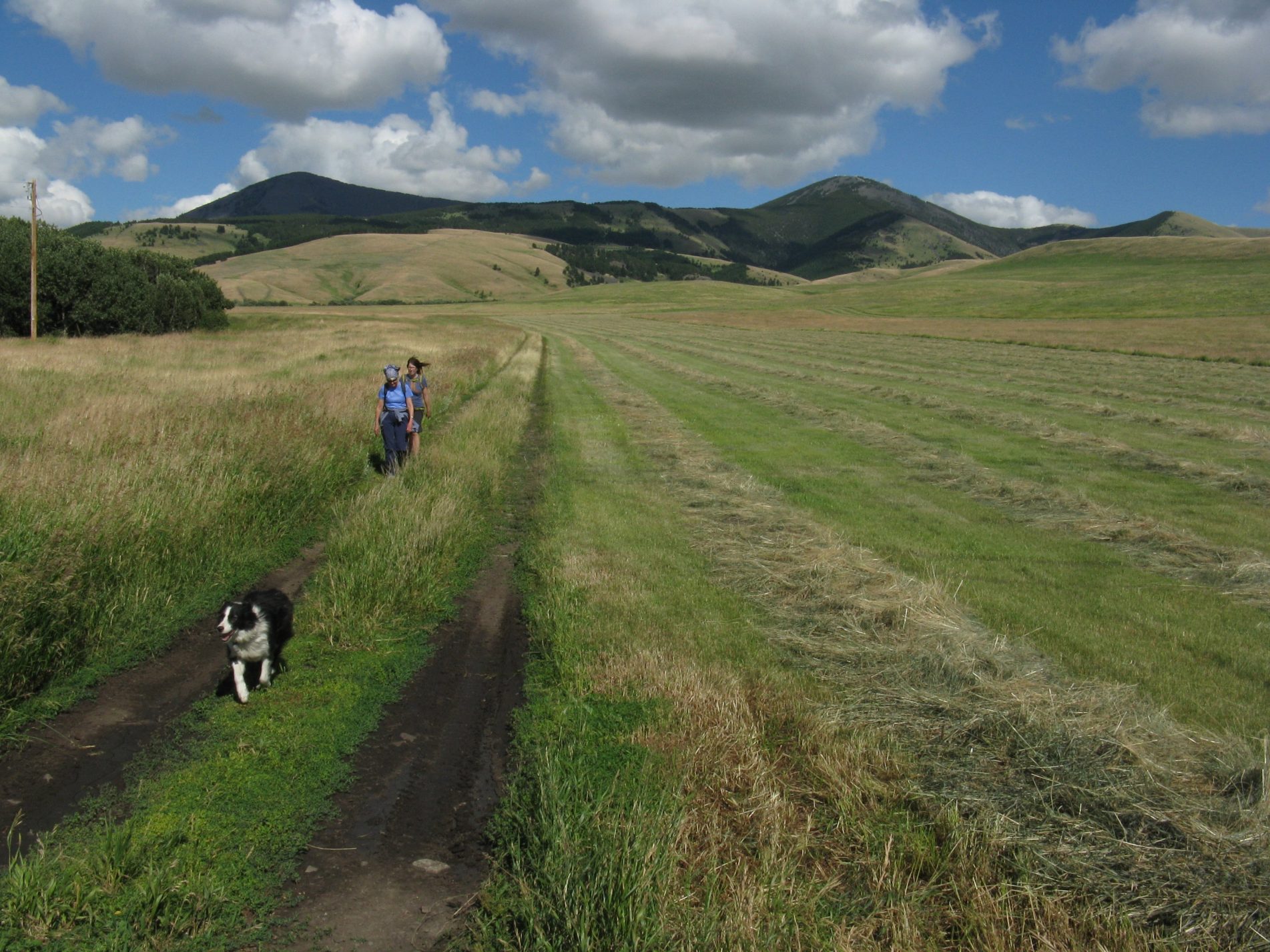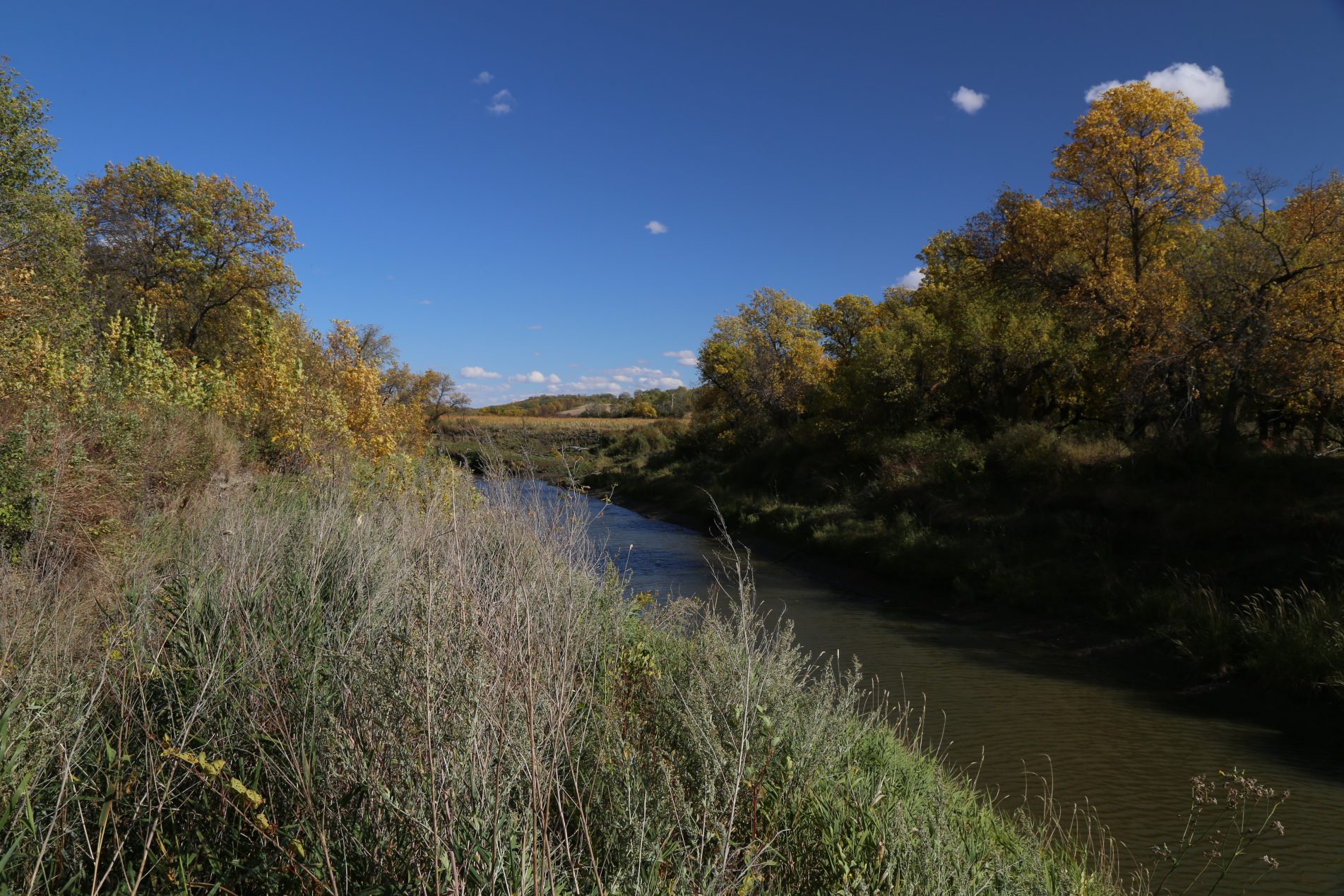
PROJECT SUMMARY
The objective of this project is to provide the City of Edmonton with projections of the future climate at a municipal scale, that is, on a 3.3 km grid. We are using the WRF Regional Climate Model to dynamically downscale an Earth System Model to a high resolution that will enable us to identify climate risks to municipal infrastructure and public services. By combining these model projections with our 900-year paleoclimate record, we will determine the extent to which the future climate of Edmonton will be outside the range of natural climate cycles. This research will assist city planners, engineers, managers and policy makers in their decision-making in an uncertain future to achieve a resilient community.

PROJECT SUMMARY
This project is investigating new opportunities for annual crop production by analyzing output from an upgraded version of the Agriculture Crop Adaptation Atlas and Database (AgCAAD), a crop suitability model developed by Alberta Agriculture and Forestry (AAF) to assess the potential for introducing new crops where they previously have not been grown. Prior to this project, the AgCAAD model relied solely on historical climate conditions; it was not used to anticipate future suitability for producing specific crops, given ongoing climate change. Therefore, the primary objective of the research was to apply a range of future climate scenarios to the AgCAAD model, and compare crop suitability under current and projected agro-climatic conditions. The results will assist the agriculture sector in Alberta by enhancing its knowledge and capacity to manage risks from a changing climate, and specifically by determining how crop suitability could be altered by anticipated shifts in climate conditions. Project deliverables will inform decision making related to crop selection, cropping system diversification, and the best use of available land and water resources.

PROJECT SUMMARY
The objective of this project is to enhance agricultural producers’ capacity to successfully cope with climate change as it relates to agricultural water management, by incorporating climate change adaptations and strategies into the design and development of their agricultural drainage works and into the mitigation conditions of their drainage approval. The Water Security Agency recognizes that to increase the number of agricultural drainage works brought into compliance requires improving agricultural producers’ knowledge and understanding about agricultural water management and climate change. Key topics that will be included in the landowner education program include:
- impacts of agricultural drainage;
- regulatory requirements of the agricultural water management program;
- climate change and the associated risks of flood and drought on agricultural production and water management; and
- the need to adapt and build climate change resilience into agricultural water management.
A second component of the project focuses on capacity building of trained professionals to work as qualified professionals. It consists of developing an adult education program to support agrologists and applied science technologists working with the agriculture industry to effectively mitigate the impacts of agricultural water management and to incorporate future climate projections into agricultural water management decision making.

PROJECT SUMMARY
The objective of this project is to build community capacity to deal effectively with hydrologic drought in the context of a changing climate and increase the capacity of watershed stewardship organizations to develop drought education and drought planning for RMs/communities within the watersheds. Communities need assistance in understanding the nature of drought, the impacts on water supplies, and the anticipated affects of climate change on drought in the development of response plans. PARC will process historical weather data and climate model output for particular locations and variables of interest to the watershed/community groups. The results will be communicated and translated to educate watershed groups and communities about the impacts of climate change. Climate change projections will be incorporated into the Water Security Agency’s risk assessment framework and community/municipal drought response plans and information materials.

PROJECT SUMMARY
The objective of this major project is to evaluate climate change risks to industrial water supplies in the lower North Saskatchewan River Basin (NSRB) of east-central Saskatchewan. Achieving this objective requires knowledge of both the regional consequences of global warming and the natural variability of the regional climate regime. We are reconstructing the natural variability of the past 900 years from tree rings, and stochastically downscaling these inferred water levels to weekly estimates. We will derive projections of future climate and runoff from the latest generation of Regional Climate Models that incorporate Land Surface Schemes for modeling surface hydrology. We are also using output an ensemble of 15 runs of one RCM to drive a calibrated hydrological model. By assimilating hydroclimatic data for past centuries and future decades, we will determine how well climate models simulate internal (unforced) climatic variability and the extent to which model projected variability exceeds the natural variability in the paleoclimate record. Using the PIEVC protocol from Engineers Canada as a climate risk assessment framework, we will collaborate with the industrial partners, Husky Energy and SaskPower, and with government regulators to identify significant climate risks to industrial water supplies in terms of their probability and consequences. This research directly benefits the industrial partners, and indirectly the Canadian energy industry, by providing data and knowledge to limit risks related to climate change and potential water scarcity.

PROJECT SUMMARY
The research problem addressed by this project is the security and resiliency of prairie industrial water supplies in a changing climate. This problem is significant because water-consumptive industries in the Prairie Provinces are a major contributor to the national economy, but they depend on secure and reliable water supplies in a region characterized by a permanent water deficit (in average years). Given the potential for prolonged water deficits in a future warmer climate, there is no guarantee that industrial water allocations will have sufficient priority to be honored. The aim of the proposed project is to support and facilitate planned adaptation to climate change in the Prairie Provinces’ energy and mining industries. This objective will be achieved through original research on past and future variability of the hydroclimate of the Assiniboine River basin, using tree rings as a proxy of past hydroclimate and the watershed hydrology simulated by the MESH hydrological model driven by projections from a Regional Climate Model. This new scientific knowledge will be translated so that it can be applied to climate risk assessment and adaptation planning in the mining and energy sectors.

PROJECT SUMMARY
The objective of this project is to provide the industrial partner, EPCOR Utilities Inc., with projections of future climate and runoff in the North Saskatchewan River Basin (NSRB) that consider both natural variability and human caused climate change. We will evaluate the uncertainty in these projections and determine the probability of reaching extreme water levels. This project is based on outputs from the latest generation of Regional Climate Models (RCMs), and driving a calibrated hydrological model with future climatology from a RCM. Compare climate and runoff projections from different RCMs and multiple runs of the same RCM enables us to determine how much uncertainty is due to using different models, different greenhouse gas emission scenarios, or the natural variability of the regional climate regime. We will compare data from the models to 900 years of weekly river flows based on the growth of trees in the river basin, and a method of scaling the annual flows to weekly estimates. This research provides EPCOR Utilities Inc. with improved capacity for planning and implementing adaptive strategies for water management under climate change.

PROJECT SUMMARY
Canada in a Changing Climate: Advancing our Knowledge for Action is the national assessment of how the climate in Canada is changing, the impacts of these changes, and how we are adapting to reduce risk. A series of authoritative science and information products will be released over the next several years. They will serve as a resource for Canadians, raising awareness of the key issues facing our country and providing information to support sound adaptation decisions and actions.
PARC was asked to lead the writing of the regional chapter focused on the Prairie Provinces. This chapter will be released in the fall of 2020.

PROJECT SUMMARY
The objective of this long-term NSERC-funded research program is to develop a better understanding of the nature and forcing of hydroclimatic variability of the past millennium in Canada’s western interior. In our tree-ring lab, we have established a network of close to 200 tree-ring chronologies spanning 20 degrees of latitude and circumscribing the Prairie Ecozone. These records provide a context for interpreting 1) the variability of measured precipitation, temperature and streamflow, 2) projections of future climate change, and 3) the sustainability of current water resource management regimes. We collaborate on studies of the paleohydrology of river basins in Chile and the western US.









